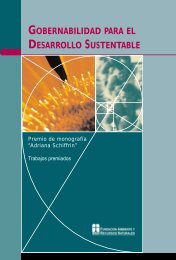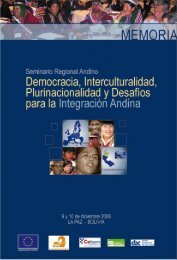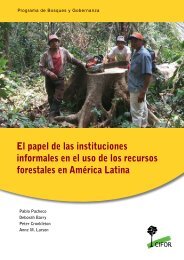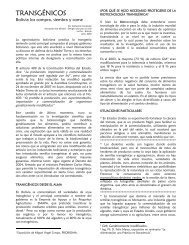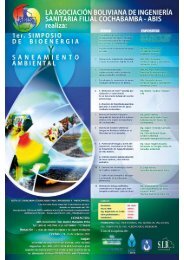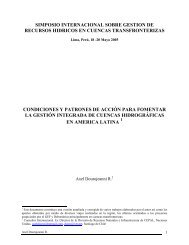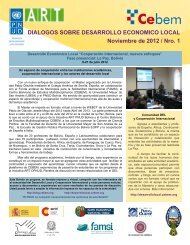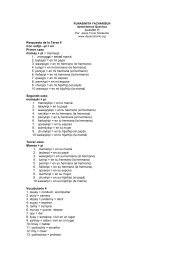Create successful ePaper yourself
Turn your PDF publications into a flip-book with our unique Google optimized e-Paper software.
C: DESCRIPTION OF THE CDS PROCESS1. THE PROCESSFollowing the Regional Workshop in which cities committed themselves to a participatory CityDevelopment Strategy, a Steering Committee was set up by Kisumu City Council as the projectimplementers to spearhead the CDS Process. The steering committee comprised of the Directorsof Social Services and Housing, Water and Sewerage, Town Planning, and Environment. Thesteering committee was coordinated by the Deputy Town Clerk and included other stakeholdersin its regular deliberations. The other stakeholders are the Western Kenya NGO Network, ITDG,Clean-up Kisumu, the physical planning department and the office of the District DevelopmentOfficer. The team has the Mayor, Deputy Mayor, 3 councillors and a private sector representativeas ex-officio members.Kisumu undertook a profiling exercise by conducting a citywide City Scan involving arepresentative sample of 3,764 community members from each of the 17 wards. Adapted from<strong>UN</strong>-HABITAT’s Safer Cities surveys, the city scan is a user-friendly data capture instrument thathas within a short duration, generated detailed information on challenges and priorities by gender,ward, social class and occupation. In addition, the city scan captured the citizen’s perceptionson the roles and impacts of public, private, and local authority organizations. Based on aparticipatory analysis of the cross-tabulations, the city council staff in conjunction with ITDGfinalized the report of the City Scan.During the feedback sessions and focus group discussions with councillors, communityrepresentatives, council employees, NGOs and government representatives, the following keypriorities emerged as critical in the development of the city development strategy:• Neighborhood and city planning;• Water and sanitation;• Self-employment and poverty reduction;• Improved security;• Waste management.Based on the priorities above, the steering committee undertook the process of elaborating anintegrated city development strategy through consulting city residents with special focus on thefour selected low-income areas of Pandpieri, Nyalenda, Obunga and Kibuye. Several cityconsultations were held to prioritize issues and draw action and investment plans.2. PRIORITY AREAS FOR STRATEGY DEVELOPMENTThe feedback sessions conducted during the city consultations short-listed 4 priority areas forstrategy development and investment planning. The identified priorities are not necessarily sectorspecific; they merely represent the immediate needs of the residents and the urban poor inparticular. The priority areas provide the building blocks for developing an integrated set ofstrategies that will incrementally encompass sectors that are equally important in attainingsustainable urban development. The priority areas rated for strategy development are as follows:• Improved urban environment• Water• Economic development and• Promoting inclusive processes and structures of local governanceThe tables below contain an outline of the causes and suggested interventions specific to eachof the priority domains.46Cities Development Strategies for Improved Urban Environment and Poverty Reduction in the Lake <strong>Victoria</strong> Region



